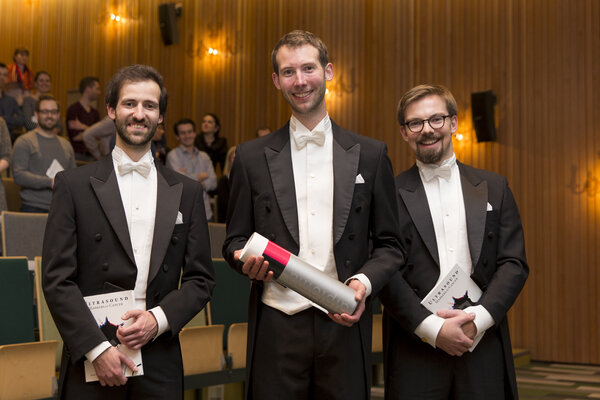Better algorithms for cancer detection using ultrasound
The highly promising Ultrasound Imaging method of cancer detection now enables better detection of prostate and breast tumors, amongst others. TU/e PhD student Ruud van Sloun studied how diseased tissue and blood vessels can be identified in Ultrasound Imaging pictures. This led to the award of a PhD with distinction from the Department of Electrical Engineering at Eindhoven University of Technology yesterday.

Optimal treatment of cancer depends on timely diagnosis. Currently, GP’s tend to use rather imprecise and expensive diagnostic tests like MRI and CT scans, supplemented with biopsies, which can result in pain and inflammation. In 2014 Van Sloun’s supervisor and co-supervisor <link onderzoek strategic-area-health nieuws>developed the Ultrasound Imaging method of detection, which makes use of ultrasound. This offers a highly-promising alternative for cancer detection since it is based purely on echography, which is both cost-effective, non-invasive and widely accessible. During his PhD study Van Sloun worked on different algorithms to identify cancerous tumors in the generated images.
Tracking microbubbles
Van Sloun’s research focuses on the multiple characteristics of tissue that are indicative of cancer, including an excess of blood vessel production, elasticity and non-linear behavior, all of which are good indicators of a tumor. Van Sloun developed a number of algorithms for the CEUS (contrast-enhanced ultrasound) method whereby injected microbubbles can be tracked in blood vessels using echography and thus anomalies identified. The large quantity of data generated by an examination using this method can now be analyzed automatically for various anomalies in the characteristics of the tissue so that tumors can be quickly identified and localized.
Van Sloun’s work could become the overture to effective screening protocols for many common forms of cancer, like prostate and breast cancer. Back in October 2016 as second author of a proof of concept in the online journal Nature Scientific Reports, Van Sloun wrote about the mammogram that it could become <link universiteit nieuws-en-pers nieuws>‘breast-friendlier' with Ultrasound Imaging.
Young Investigator Award
Van Sloun’s supervisors are impressed by the number of papers Van Sloun has already had published: 17 in prominent journals (with 4 articles still being processed), 14 conference articles and 7 top-quality synopses. His work has been cited more than 50 times and two patent applications based on van Sloun’s work have been submitted.
For his research Van Sloun received the prestigious Young Investigator Award from the European Federation of Societies in Ultrasound in Medicine and Biology (EFSUMB) at the Euroson 2017 event in Slovenia last September.